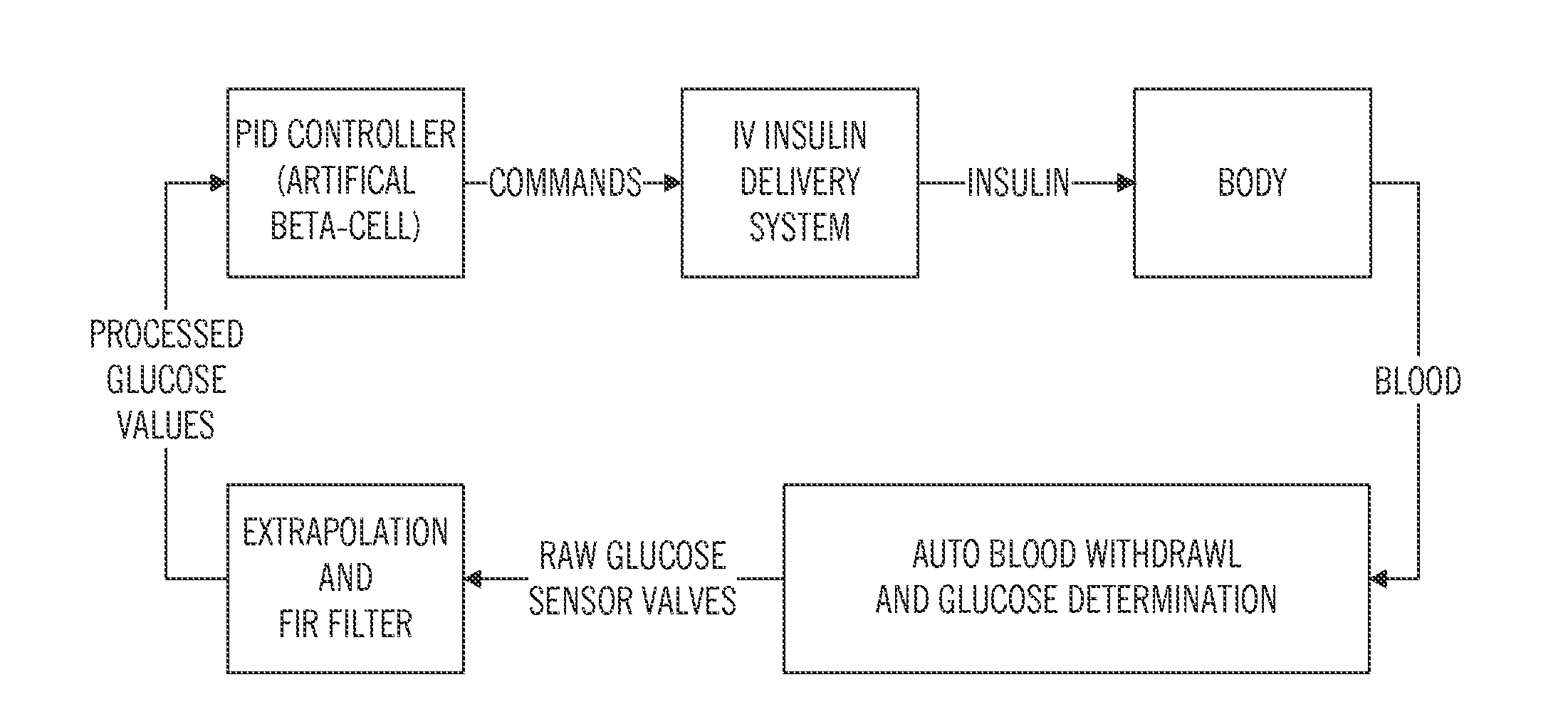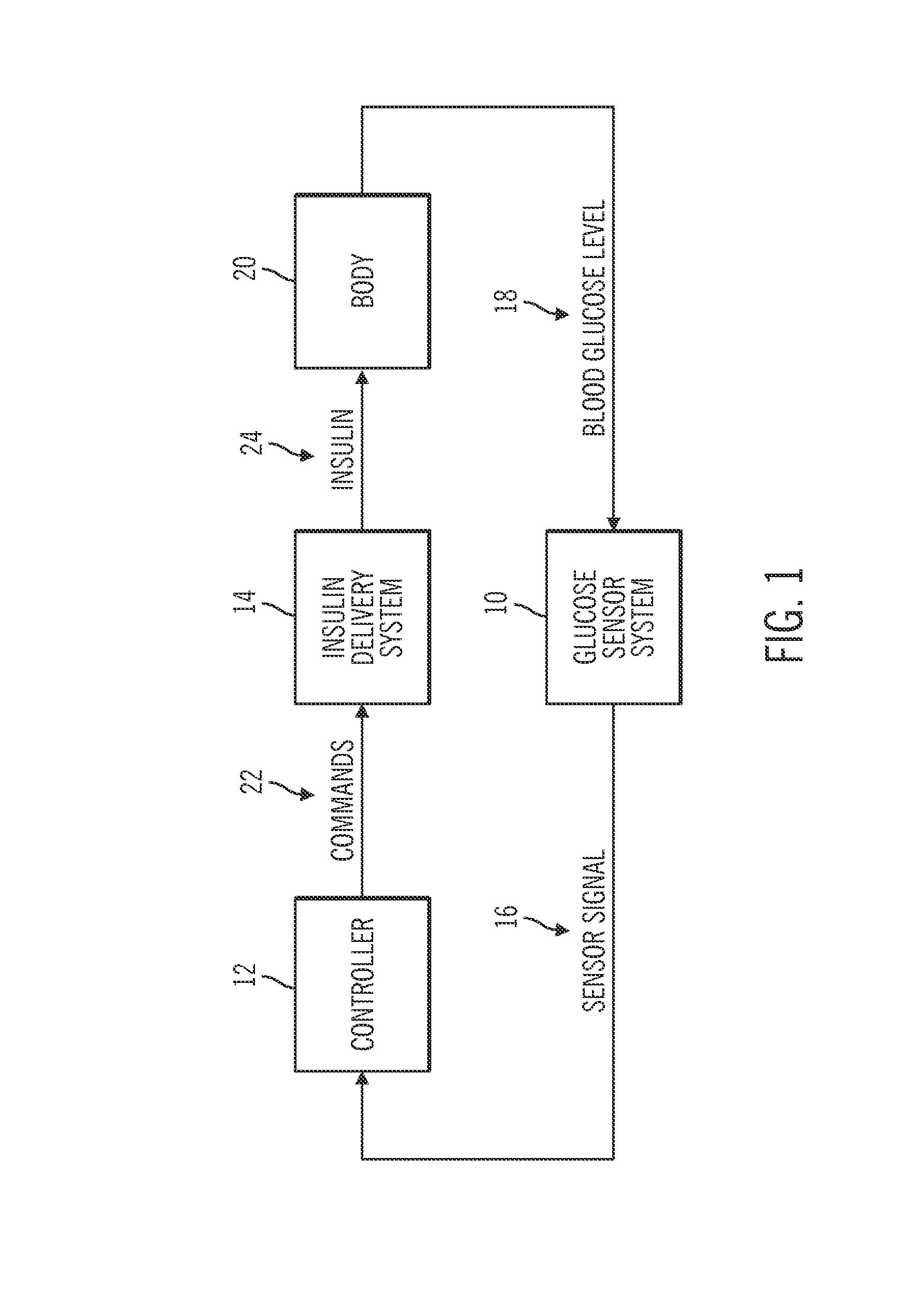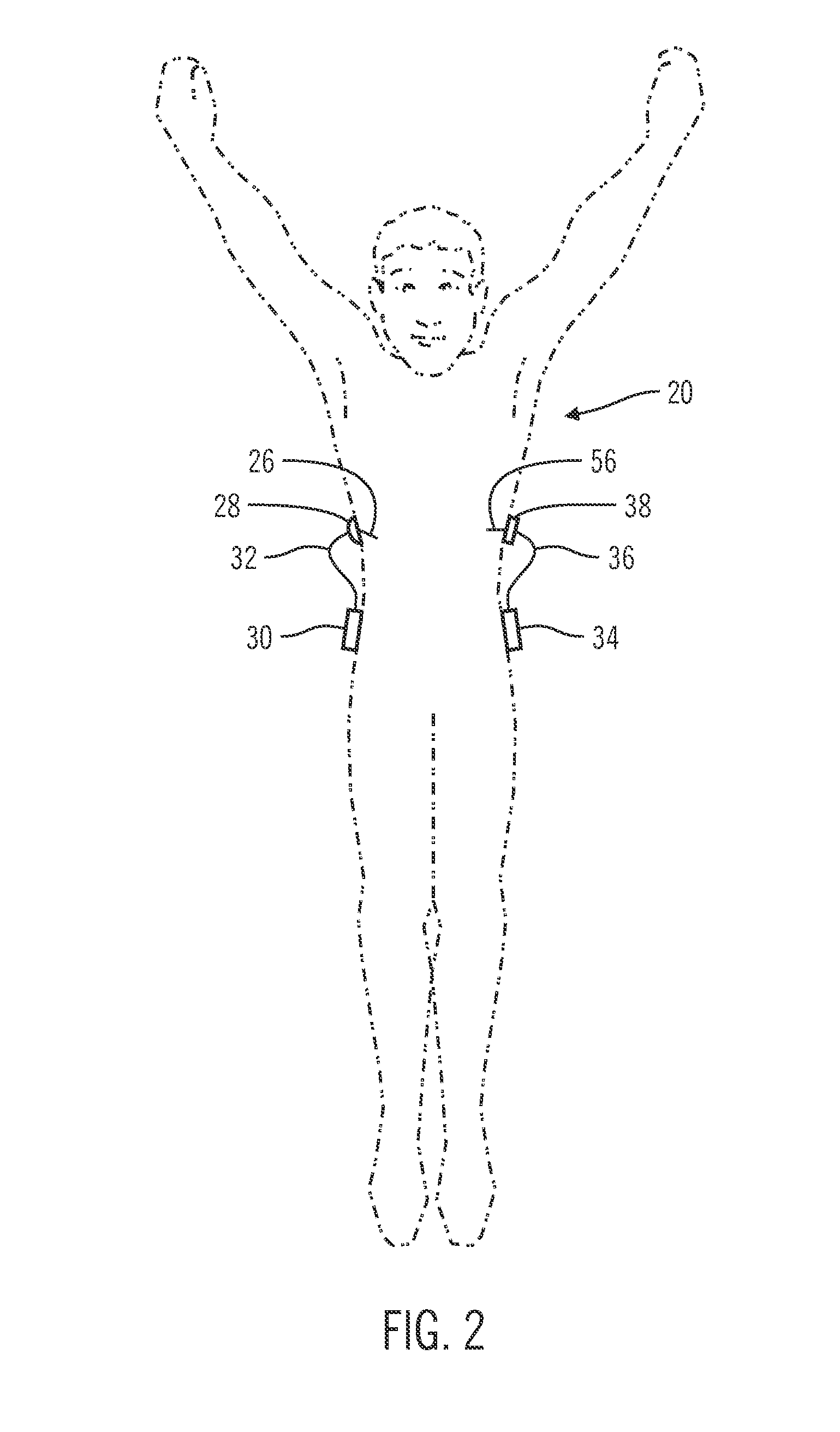Safeguarding techniques for a closed-loop insulin infusion system
a closed-loop, insulin technology, applied in the field of drug delivery systems, can solve the problems of less desirable use of traditional external infusion pumps and limited speed of current pumps
- Summary
- Abstract
- Description
- Claims
- Application Information
AI Technical Summary
Benefits of technology
Problems solved by technology
Method used
Image
Examples
case a
[0486
[0487]Case A refers to the scenario depicted in FIG. 50B, where the most recent calibration factor, CFR, is a historical value that has already been generated.
[0488]If (tP is not in the time window (tR−tDiffmin:tR)), the following logic is checked.
If (CFmin ≦ CFR ≦ CFmax)If (t−tRecent ≦ tR ≦ t)If (tR−tDiffmax ≦ tP ≦ tR−tDiffmin)If (CFmax ≦ CFP ≦ CFmax)Calculate CFchange with CFR as the CFcurrent andwith CFP as the CFprevious in Equation 50 statedaboveIf (CFchange ≦ CFchangeTh)Enter Closed LoopElse Cannot enter closed loop at that timeElse Cannot enter closed loop at that timeElse Cannot enter closed loop at that timeElse Cannot enter closed loop at that timeElse Cannot Enter Closed Loop
[0489]If any of the above conditions is not met, the system remains in the open-loop mode. Thus, in order to enter the closed-loop mode, new calibration(s) that satisfy all of the conditions in Case A (or Case B as described below) will be required.
case b
[0490
[0491]Case B refers to the scenario depicted in FIG. 50C, where the most recent calibration factor, CFR, is a historical value that has already been generated.
If (tP is in the time window (tR−tDiffmin : tR)),CFP2 = most recent CF value in the time window of tR−tDiffmax :tR−tDiffmintP2 = time when CFP2 was obtainedIf (CFmin ≦ CFR ≦ CFmax)If (t−tRecent ≦ tR ≦ t)If there is a CFP2 availableCalculate CFchange with CFR as the CFcurrent and withCFP2 as the CFprevious in Equation 50 stated aboveIf (CFP2, CFR and all CF values between times tP2 and tRlie in the range of (CFmin:CFmax) AND CFchangebetween CFP2 and CFR is ≦ CFchangeTh)Enter closed loopElse Cannot enter closed loop at that timeElse Cannot enter closed loop at that timeElse Cannot enter closed loop at that timeElse Cannot Enter Closed Loop
[0492]If any of the above conditions is not met, the system remains in the open-loop mode. Thus, in order to enter the closed-loop mode, new calibration(s) that satisfy all of the conditio...
case c
[0504
[0505]Case C corresponds to a scenario where the time of prior calibration is greater than 120 minutes before the most recent calibration. In addition, the recent calibration factor (CFR) and the prior calibration factor (CFP) are within limits as shown in the following logical expressions.
CFmin≦CFR≦CFmax (eq A2)
CFmin≦CFP≦CFmax (eq A3)
Here, CFR is the recent calibration factor value, CFP is the prior calibration value, CFmin is the minimum value for the calibration factor that is set as 2.5 mg / dL per nA, and CFmax is the maximum value for the calibration factor that is set as 6 mg / dL per nA.
[0506]For Case C, the time of prior calibration (tP) occurs between two and eight hours before time of recent calibration factor as shown in the following logical expression.
tR−tDiffmax≦tP≦tR−tDiffmin (eq A4)
Here, tP is the time of prior calibration, tR is the time when CFR was obtained, tDiffmax is the maximum time difference between the recent calibration and the prior calibration (whic...
PUM
 Login to View More
Login to View More Abstract
Description
Claims
Application Information
 Login to View More
Login to View More - R&D
- Intellectual Property
- Life Sciences
- Materials
- Tech Scout
- Unparalleled Data Quality
- Higher Quality Content
- 60% Fewer Hallucinations
Browse by: Latest US Patents, China's latest patents, Technical Efficacy Thesaurus, Application Domain, Technology Topic, Popular Technical Reports.
© 2025 PatSnap. All rights reserved.Legal|Privacy policy|Modern Slavery Act Transparency Statement|Sitemap|About US| Contact US: help@patsnap.com



